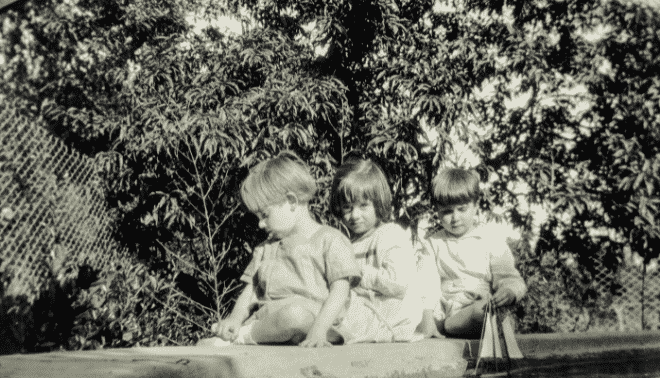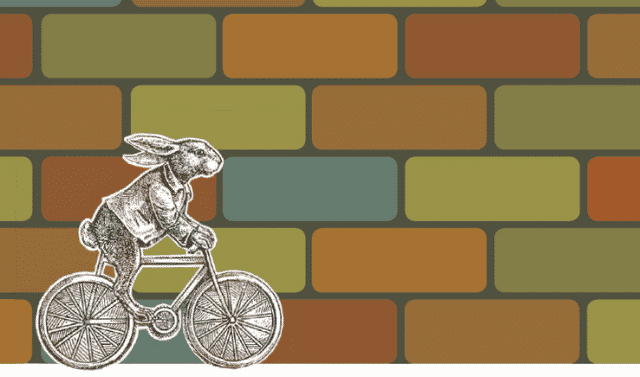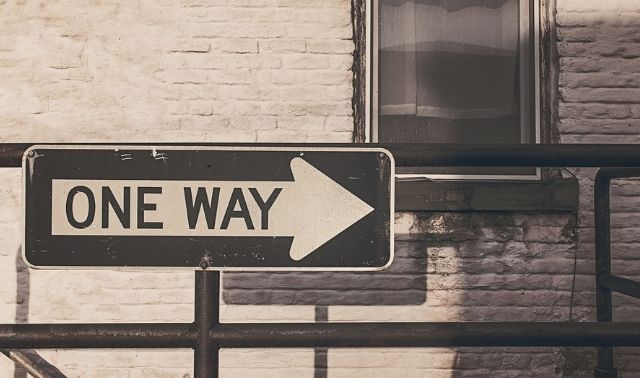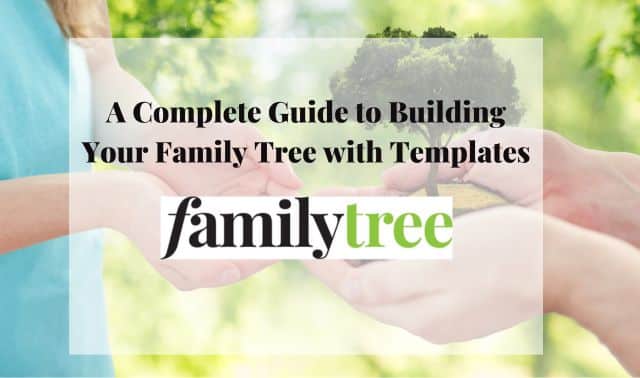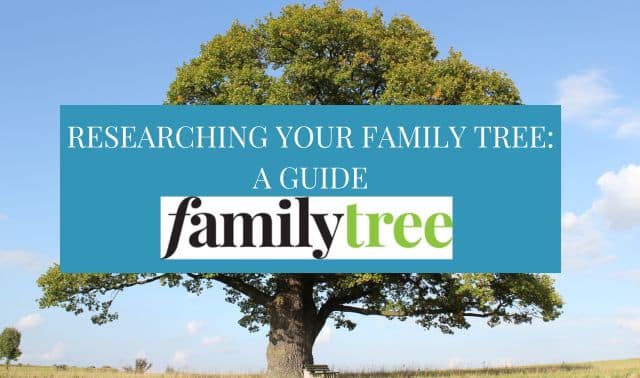Sign up for the Family Tree Newsletter! Plus, you’ll receive our 10 Essential Genealogy Research Forms PDF as a special thank you.
Get Your Free Genealogy Forms
"*" indicates required fields

Ever wonder how you got stuck with such a difficult family tree to climb? Your ancestry research is constantly running into roadblocks and brick walls. Meanwhile, it seems other genealogists are tracing their roots back to the Middle Ages!
Don’t worry: All family historians get genealogy research block sooner or later. And you don’t have to be biologically blessed to break through it. Take a hint from these 30 Family Tree Magazine readers. They came up with creative solutions to some of the most common genealogical conundrums—and their methods are remarkably easy to employ. Give your research a boost by adopting these habits of highly successful family historians.
1. Keep your eyes open when searching through old stuff.
I had no record of my grandfather’s birthplace in Poland. One day I was cleaning out my mother’s dresser drawer and going through her stamp collection, when I came across an envelope with a canceled stamp from Poland. It was from a relative of my grandfather, with whom he’d corresponded in the early 1900s. The town in Poland, Brzozow, was clearly printed on the postmark—much easier for me to decipher than Polish script.
– Deb Vevea, Robbinsdale, Minn.
2. Use maps and gazetteers.
The US Geological Survey’s highly detailed topographical maps cover small areas and label creeks, family cemeteries, tiny rural churches and more. They’re available in many libraries, or you can view and order them online. Many libraries also have a comprehensive index to the names on these maps, the Omni Gazetteer of the United States of America. In it, I found a list of 41 Jordan cemeteries across the country.
– Rene Jordan, Knoxville, Tenn.
3. Methodically research locations.
Copy and enlarge a map with your town of interest in the center. Using the distance scale, draw concentric circles at regular intervals, such as 10 miles, from that town—you’ll end up with what looks like a target. Then make an alphabetized list of town names appearing within each pair of rings.
When you’re working with records, you can refer to your list and determine if a strange-sounding location might be in proximity to your area of interest. For example, it was only after doing this exercise for Tolpuddle, Dorset, England, that I realized Dewlish (about which I’d received emails) was actually just down the road.
– Jacki Keck, Williston, ND
4. Reach out to other researchers.
I believe in leaving my name, surnames I’m researching and contact information (email address, mailing address and phone number) every place I can think of. I left my genealogy card on a laundry bulletin board in the small town where my great-grandmother lived, and got four phone calls with information about her.
– Jana Jordan Shaw, Burleson, Texas
5. Start a letter-writing campaign.
I was getting nowhere on my search for my mother’s father’s family. I found Mom’s old address book and started searching for family members. I put together an introductory newsletter with contact information, an explanation of what I was doing and a request for help. I was amazed at the replies—emails, letters, photos, family information and names of more relatives to send the newsletter to. Now I do a newsletter about four times a year, and still get new information and meet new relatives. It’s been a wonderful experience that’s helped fill in a lot of my blanks.
– Liz Weiers, Moose Jaw, Saskatchewan, Canada
6. Publish your pedigree.
I’ve been researching my husband’s Welsh lines, and have been successful using the internet, the National Library of Wales and a local Welsh archive. On trips, we’ve found ancestral homes, churches and gravestones. But I definitely hit a brick wall on a couple of lines.
A distant cousin in England signed us up for a genealogical journal that focuses on my husband’s family’s region of Wales. In the first issue, I found helpful hints but nothing too substantial, so I decided to write an article about our family. Within three weeks of its publication, I received letters from readers related to us. Not only did they provide me with ideas for new resources, they also sent pedigree charts and stories about my husband’s ancestors.
– Michelle Price, Whiteman Air Force Base, Mo.
7. Don’t underestimate cities.
Go to the city! For example, if your family was in the Midwest during the 1800s and you can’t find them, look in Chicago. Many of our ancestors were drawn to cities. They may have gone to search for work, be near relatives or the train station, or simply to sightsee.
I searched for years for my husband’s great-grandmother Margaret Culton. She was supposed to have been born in Michigan in 1860, but I could find no records for any Cultons there. I looked in Wisconsin, Minnesota and Illinois, too. A year or two ago, I went back to the 1880 Illinois census—now with its every-name index—and there she was, living with her father and mother. They had been visiting her sister’s family in Chicago—from their home in California. Cities are magnets for people, then and now.
– Bonnie B. Ruff, Belfair, Wash.
8. Use first names.
When name searches on websites such as HeritageQuest Online (available through subscribing libraries) and Ancestry.com don’t yield results—even though you’ve tried every spelling you can think of—try typing just a first name, plus a place and/or time period. I did this on HeritageQuest Online and found the mis-transcribed and misspelled names of two ancestors who had eluded me for a long time.
– Donna Carnall, Cherryvale, Kan.
9. Search for newsletters.
Look for newsletters of schools, universities, synagogues, churches and communities—you may find birth, marriage, Bat Mitzvah and Bar Mitzvah announcements, obituaries, donor lists, oral histories and photographs. Alumni lists in school newsletters often contain graduation years and maiden names. To find online newsletters with your surnames, use a web search engine such as Google. The advanced search can help narrow your results by location.
If you don’t come up with an online newsletter, get the names of local organizations and publications from your search, and visit a nearby library or archive—it may hold documents from churches, clubs, schools and business associations in the area.
– Teresa Milner, New York, NY
10. Locate material witnesses.
A witness’s signature can be important to your research. On my great-great-grandmother’s Confederate States of America widow’s pension application, her oldest, as-yet-unidentified daughter appears as a witness. With that name, I launched a web and phone-directory search for the area. I found two different families who knew they were kin but didn’t know how. Then I took the witness’s surname to the library where these families lived and read every genealogical society newsletter on file.
In one newsletter, a researcher from Colorado referred to the married surname of my pension-application witness. I wrote her, and a few months later, she sent Bible pages that listed all my great-great-grandparents’ children, except my great-grandfather—which was OK because I already knew all about him.
– Shirley Bray, Oklahoma City, Okla.
11. Follow the patterns.
I look for families’ first-name patterns and for first names that are family surnames. Such patterns provide clues to female relatives’ families, as it often was customary to give a male child his mother’s maiden name. I’ve also found that in some cases, a daughter was given the mother’s maiden name.
– Jeri Taylor, Morehead, Ky.
12. Focus on the effect, not the cause.
Many people spend a lifetime searching for their ancestors’ naturalization records, and they never find them. I thought this would happen to me until I stumbled across a solution. My research subject, Manuel E. Rencurrell, was a longtime resident of Boston. I’d searched every available naturalization index to no avail.
I decided that instead of looking for the cause, naturalization, I’d look for the effect, voting. I requested Manuel’s voter-registration records and received his voter card. This proved that he’d become a citizen—and his date of naturalization and the court where it happened were on the card.
– P. Emile Carr, Palm Coast, Fla.
13. Seek neighborly advice.
In 20th-century city directories, you’ll often find a cross-street index—an excellent resource for finding living relatives. This index is arranged alphabetically by street, then by the address numbers of houses, apartments and businesses. It also gives the residents’ names. You can use a cross-street index to find names of people living next-door to an ancestor—if they still live there, they still may remember your relatives.
– David Powell, Grand Prairie, Texas
14. Go slow and steady.
I knew an approximate date of birth (1809) for my ancestor and a rough location (Alsace, France). I ordered birth records on microfilm for one city at a time for all the cities in that area, and searched each one. All on one birth record, I found my ancestor’s information, plus his parents’ and grandparents’.
– Sally Jaquet Roberts, Clyo, Ga.
15. Take a sound approach to place searches.
Be sure to check out variations of place names, too. My brick wall was finding my great-great-grandfather and his parents. According to his death certificate, he was from Milford, NC. I searched online and studied atlases but couldn’t find a town or county called Milford in North Carolina or surrounding states. Finally, I located a Guilford County. That name rhymes with Milford, and on census images, the handwritten Guilford looked like Milford. Sure enough, I found Great-great-grandpa and his family living there.
– Sherry Daniels, Garden Grove, Calif.
16. Try starting from scratch.
Start over! Would you believe a computer crash got me over my brick wall? Being forced to painstakingly re-enter all my research into a new genealogy program helped me discover unseen facts that had been at my fingertips the whole time. Facts I’d input three or more years ago (when I was too inexperienced to know what I’d found) looked entirely different when viewed with fresh, better-trained eyes. If you’ve spent more than a year barking up the same tree, try starting from scratch. Create a new file in your genealogy program (or update your software or buy a different brand) and see what information jumps out at you.
– Leah Ellison Bradley, Louisville, Ky.
17. Widen your search.
My great-great-grandfather died in Georgia while serving as a Confederate soldier during the Civil War. I searched that state’s records for years without finding his wife’s pension documents. Then I happened to search Alabama pension records for the surname Michael. That was when my great-great-grandmother’s name jumped out at me. I discovered that a Civil War pension could be obtained in a state other than the one involving the death.
– Coy E. Michael, Huntsville, Ala.
18. Go to the right place.
This is so simple that it boggles the mind: When searching for death certificates, remember that you will find them in the city or county where the death actually happened — not necessarily the city or county of residence. I learned this after spending several hours searching in the wrong place.
– Calvin Lyons, Powell, Tenn.
19. Create a chronology.
I prepare a chronology sheet for each ancestor. It includes columns for the date, a description of what happened on that date, and the source of the information. This means all the facts I’ve found about that ancestor — from vital records, census enumerations, immigration and naturalization forms, and land and probate records — are in one place. I also include the ancestor’s family members with birth, marriage and death dates, and a “still need to find” list of records I haven’t located yet. Preparing my chronology sheet forces me to take a second look at the information I’ve gathered. The long-forgotten facts I’ve rediscovered have helped me prepare my research strategy.
– Carole Magnuson, Lockport, Ill.
20. Get a little help from a friend.
I’m sometimes too close to a specific brick wall to view it objectively. So I “trade” problems with a friend. I try to find her missing information, and she tries to find mine. This brings a fresh look to a frustrating situation, and it’s fun to help someone else.
– Karen Seibert, Ft. Myers, Fla.
21. Find the funeral home.
Can’t find a birth certificate, but have a death certificate? Never underestimate the power of the funeral home. Our grandmother’s state of birth, but not the city, was listed on her death certificate. We searched for years to no avail. Then we called the funeral home, which fortunately was still in business, and its records contained the information we were seeking.
– Jean F. Joseph, Wethersfield, Conn.
22. Browse records when you can.
On research trips with my husband, I’ve twice made breakthroughs while browsing through records just to kill time. In one instance, I found my fourth-great-grandfather’s parents, who had eluded me for 30 years. Unfortunately, my ancestor’s given name, John, was popular in his family, making him difficult to distinguish from other relatives.
I’d already searched an old hotel register — one so delicate, it had to be placed on pillows before I could open it — for John’s signature. It was there, containing his middle initial S, as usual. As my husband continued his research, I casually looked through the rest of the register to see if John had stayed at the hotel any other times. He surely had, signing each time with the familiar S. Then I saw an entry in which an associate of John’s had signed for him — and included John’s full middle name. That middle name opened the doors in my brick wall. Not only was it his father’s name, but it also was his great-grandmother’s maiden name.
This new information led me to his father’s will and the verification that this was the family I sought. Three-plus generations came from this one instance of browsing in a leisurely manner, rather than immediately zeroing in on a particular point.
– Evelyn Naranjo, Rockville, Md.
23. Utilize forums and message boards.
I’ve solved my two highest brick walls by posting a current family tree on genealogy message boards. Shortly after posting a tree with what little information I had on my natural maternal grandfather, I received an email from a descendant of my grandfather’s sister Ethel’s husband. The emailer wasn’t a blood relative of Ethel’s, but he had the family Bible. In it were complete dates and places of births and deaths — plus my great-grandmother’s maiden name. With all this new information, I was able to track backward using census data.
This led me to other family trees people had posted, along with source information. It turns out my great-grandmother descended from Frances Cooke of the Mayflower, along with other early settlers of this country. I was able to follow other family lines several generations back, as well.
– Mark Grosser, Lancaster, Calif.
24. Send updates.
Giving your family periodic updates is one of the most important things you can do as you research your family history. Your latest discovery may spark a relative’s memory, and she’ll recall new information for you. I’ve found this to be the case time after time in my own family.
– Ann Mohr Osisek, Maitland, Fla.
25. Look beyond family lore.
Census records told me my great-great-grandfather was from Hesse-Darmstadt in Germany, but I couldn’t find anything more specific. His hometown wasn’t on any of the usual sources, such as his declaration of intent or his death certificate, and I couldn’t locate his naturalization papers. Family tradition held that he wasn’t a churchgoer, which ruled out church records.
But while reading family obituaries, I noticed that a daughter-in-law had been a member of a German-speaking church. With nowhere else to look, I went to that church. I pored over the records, which were written in German, and was elated to find christening records for two of my great-great-grandfather’s sons.
And then — there it was! The church’s minister had conducted my ancestor’s funeral service, and the record book identified the German village where he was born. Family tradition isn’t always accurate.
– Dianne Beetler, Bloomington, Ill.
26. Work sideways with siblings.
Don’t forget “side doors.” Sometimes you have to find your own ancestors through their siblings. While searching online for my maternal great-grandfather, I found summaries of his death certificate along with his brother’s. I ordered copies and between the certificates learned different versions of my great-great-grandfather’s name. My ancestor’s certificate gave only their father’s nickname; his brother’s gave the given name. Using this information, I was able to find the family in several census records and in court documents. One of the court documents was a will, which added another generation — my third-great-grandfather. From that point, I’ve been able to trace several family lines back to Virginia.
– Sylvia Nash, Paris, Tenn.
27. Try another time frame.
I couldn’t find my in-laws’ marriage record at the county courthouse. No one in the family knew when they were married or even where the ceremony took place. I followed a hunch that the wedding occurred fewer than nine months before their first child was born. At a local museum in their hometown, I searched the weekly newspaper for a wedding notice. Sure enough, I found an announcement, so back to the courthouse I went. I found their marriage license there, even though it wasn’t listed in the index. The wedding didn’t take place on the date the newspaper reported, but a few days earlier.
– Cynthia Rhoades, Hagerstown, Ind.
28. Search on the place.
I did an internet search for the little village from which my parents and grandparents emigrated. I couldn’t believe it when I turned up the Web site of an organization for people who had lived there. I had tried various spellings of the name (Hungarian, German and Romanian versions), and finally found it. Since then, I’ve connected with second cousins who have given me invaluable help, as has the organization.
– Rose Mary Hughes, West Henrietta, NY
29. Scout out surrounding plots.
While at the cemetery, check around your ancestors’ graves for other family members. I found an ancestor’s mother-in-law’s grave, and on that stone was the maiden name.
– Beth Green, Jenison, Mich.
A version of this article appeared in the February 2005 issue of Family Tree Magazine.

